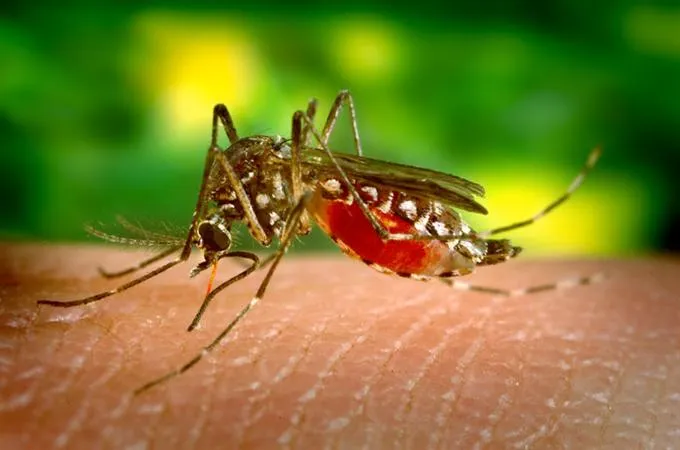- The recent detection of a rare H5N1 avian flu strain in an Australian child who had traveled to India has raised significant concerns among health authorities and the scientific community. This case marks the first time in Australia that this particular strain of avian influenza has been confirmed in a human, triggering alarm about the potential for further transmission and the broader implications for public health. The H5N1 strain, commonly known as bird flu, has been responsible for several outbreaks worldwide, particularly among bird populations, but human infections have remained rare, often with severe outcomes.
Understanding H5N1 Avian Influenza
Avian influenza, also known as bird flu, is an infectious disease primarily affecting birds but can occasionally spread to humans and other animals. The H5N1 strain of avian flu is one of the most well-known and concerning variants, as it has demonstrated a significant ability to cause severe illness and high mortality rates in humans. First identified in 1997, H5N1 has since caused numerous outbreaks across Asia, Europe, and other regions, with sporadic cases of human infections reported.
H5N1 primarily spreads among poultry through contact with infected birds or contaminated environments. Wild birds can carry the virus without showing symptoms, which allows them to spread the disease over vast distances. Humans can become infected with H5N1 through direct contact with infected birds or their droppings, saliva, or nasal secretions. Although human-to-human transmission of H5N1 is rare, it has been a significant concern for public health officials due to the virus’s high pathogenicity and potential for mutation.
In most human cases, the infection causes severe respiratory illness, often leading to pneumonia, acute respiratory distress syndrome (ARDS), and multi-organ failure. The fatality rate among those infected with H5N1 has historically been high, contributing to fears that the virus could mutate into a more transmissible form and potentially lead to a global pandemic.
The Australian Case: A Child’s Infection After Travel to India
The case of an Australian child who contracted the H5N1 avian flu strain after traveling to India has drawn international attention due to the rarity and seriousness of the infection. Health authorities in Australia confirmed that the child, who had recently returned from India, exhibited symptoms consistent with avian influenza. After thorough testing, it was revealed that the child was infected with a rare H5N1 strain, which had not previously been detected in Australia.
The child’s case was a cause for concern due to the severity of the illness and the potential for further transmission. Health officials immediately initiated a thorough investigation to identify any contacts the child may have had while they were symptomatic, and whether the virus had spread to others. This situation underscores the complex challenges posed by avian flu, particularly in the context of international travel, where pathogens can be introduced into new regions.
India, like many countries, has experienced sporadic outbreaks of avian influenza, primarily in poultry farms. However, human cases of H5N1 infection in India have been relatively rare. The Australian child’s infection serves as a reminder of the ongoing risk posed by avian flu, particularly as international travel has become more frequent and widespread in recent years. The child’s travel to India may have involved exposure to infected poultry or contaminated environments, although the exact source of infection is still under investigation.
The Global Implications of the Australian Case
The detection of a rare H5N1 strain in a human in Australia is concerning for several reasons. First, it highlights the ongoing global risk posed by avian influenza, particularly in regions where poultry farming is widespread, and where contact between humans and animals is frequent. While human infections with H5N1 remain relatively rare, the possibility of the virus mutating and becoming more easily transmissible between humans has been a long-standing concern.
One of the primary worries among health experts is the potential for the H5N1 virus to undergo genetic mutations that would allow it to spread more easily from person to person. If this were to occur, it could lead to a global pandemic, similar to the 2009 H1N1 swine flu outbreak, or the 1918 Spanish flu pandemic. Although this scenario is unlikely, the mere possibility of a mutated strain capable of efficient human-to-human transmission is enough to keep health authorities on alert.
The case in Australia also underscores the importance of robust surveillance systems and early detection methods for avian influenza. Detecting infections early allows for prompt isolation and treatment of patients, reducing the risk of further transmission. In this case, the Australian health authorities acted quickly to identify the source of the infection and prevent any potential spread to other individuals.
Another significant concern is the impact that such an outbreak could have on public health infrastructure. Health systems worldwide, already burdened by the ongoing COVID-19 pandemic, may struggle to manage a large-scale outbreak of avian flu, particularly if the virus were to mutate and spread more rapidly. Governments and health organizations must continue to invest in pandemic preparedness and response strategies to mitigate the risks associated with avian influenza and other zoonotic diseases.
Avian Influenza Surveillance and Prevention Measures
In response to the Australian case, health authorities are likely to increase their surveillance efforts for avian influenza, particularly in areas where poultry farming is common. This may involve enhanced monitoring of poultry farms, increased testing of animals, and greater public awareness campaigns to educate people about the risks of avian influenza and the steps they can take to protect themselves.
For travelers to regions where avian flu is known to be circulating, health experts recommend taking precautions to avoid exposure to potentially infected poultry or birds. This includes avoiding direct contact with live birds, their droppings, or environments where they live, such as markets and farms. Travelers should also ensure they wash their hands thoroughly after visiting any areas where poultry is present, and avoid consuming undercooked or raw poultry.
Vaccination is another critical tool in the fight against avian influenza. While there is no universal vaccine available for H5N1, vaccines have been developed for certain strains of the virus. Health authorities may also choose to stockpile antiviral medications that can be used to treat patients infected with H5N1, as well as to prevent the spread of the virus in high-risk populations. However, the availability of vaccines and treatments remains limited, particularly in regions with limited healthcare infrastructure.
Research into avian influenza continues to be a priority for scientists and public health organizations. Understanding the genetic evolution of H5N1 and other avian influenza strains is essential to predicting potential risks and developing more effective prevention and treatment strategies. Furthermore, scientists are working on improving diagnostic tools and developing vaccines that could protect against a broader range of avian flu strains.
Ongoing Vigilance and Preparedness
The recent detection of the H5N1 avian flu strain in an Australian child after travel to India serves as a stark reminder of the continued risks posed by avian influenza. Although human infections with H5N1 remain relatively rare, the possibility of the virus mutating into a more transmissible form highlights the importance of ongoing surveillance and preparedness efforts. As international travel continues to increase, the potential for zoonotic diseases like avian flu to spread across borders remains a significant global health concern.
Health authorities must remain vigilant in monitoring avian flu outbreaks, educating the public on protective measures, and investing in research to develop better diagnostic tools, vaccines, and treatments. With the right precautions and continued scientific advancements, it is possible to mitigate the risks posed by H5N1 and other avian influenza strains, protecting both human and animal health worldwide.




















